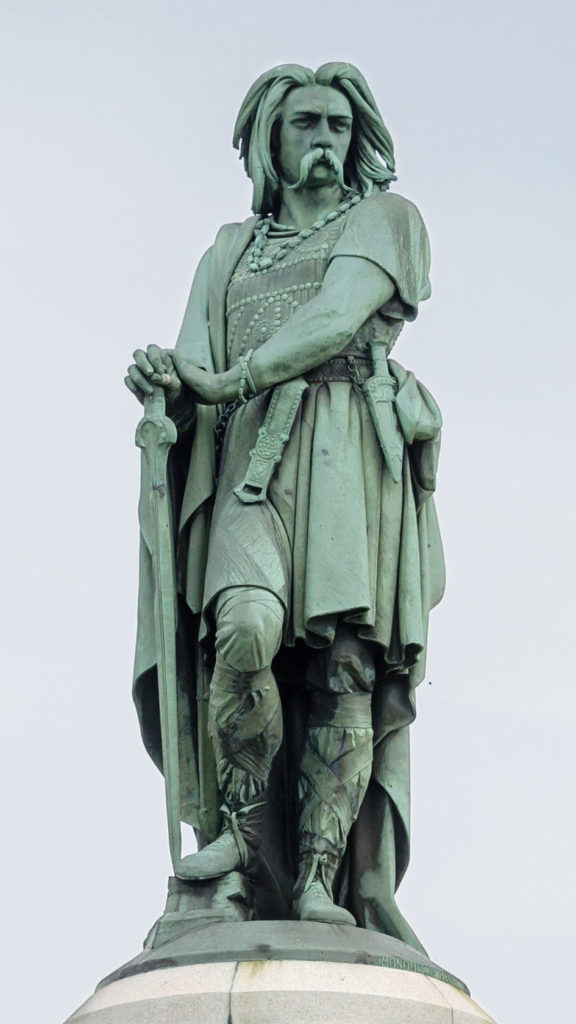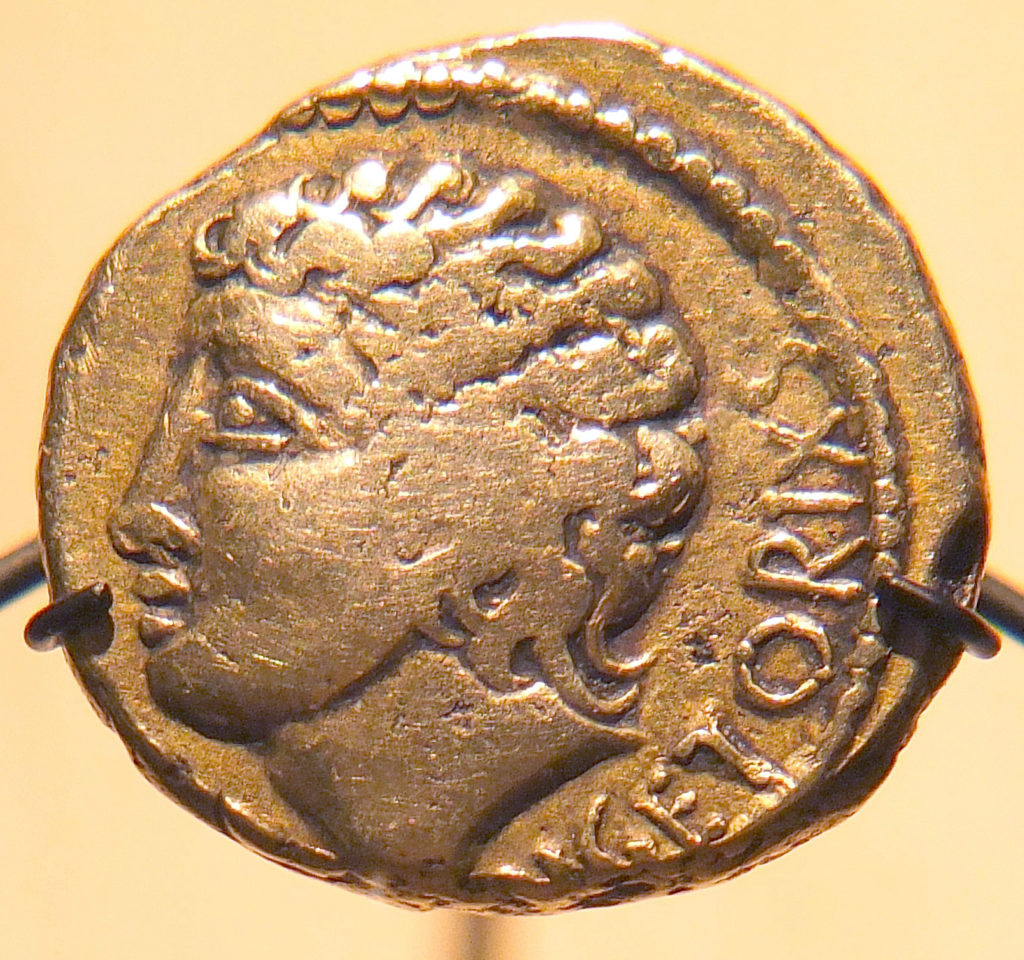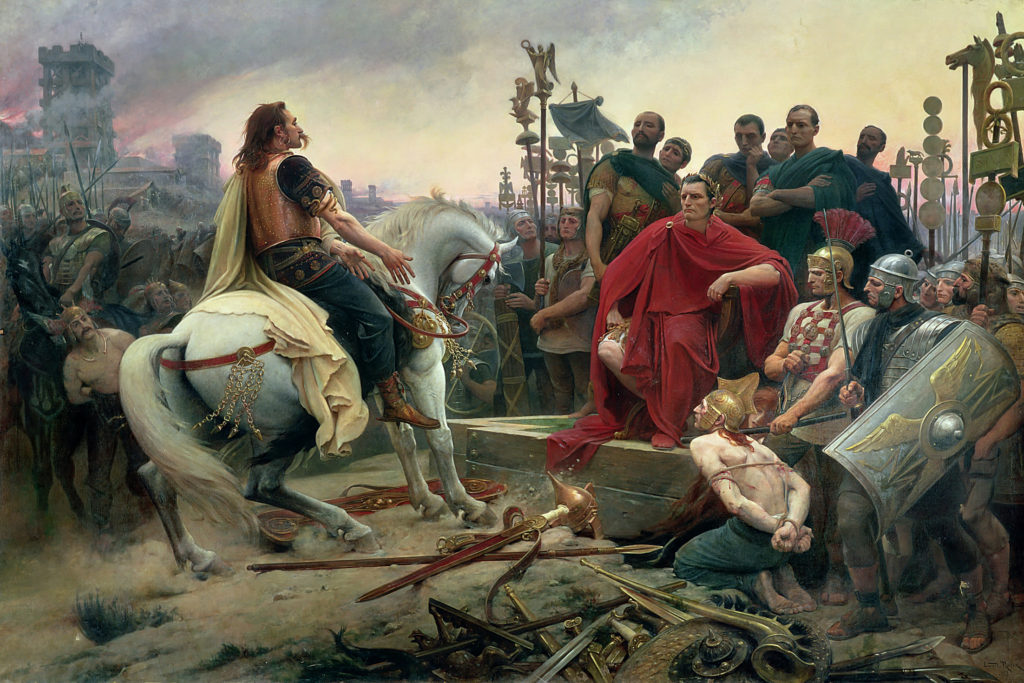
Years: 82 BC – 46 BC
Characteristics: Leadership, Charisma, Stealth, Liberty
Location: Gaul
Ogham Correlations: Tinne (Holly), Onn (Gorse), Luis (Rowan), Fearn (Alder)
Symbols: Swords, Shield, Torc, Horse
Other names: Great Warrior King, King of Great Warriors, King of Gaul
Early Life
Vercingetorix was born the son of Celtillus the Arvernian, a Gallic tribal leader. Accounts of Celtillus are conflicting; however, according to Caesar, he was put to death for attempting to consolidate all the tribes of Gaul. While he failed, he would certainly serve as an inspiration to his son, who would envision a Gaul returning to its Celtic roots, free of Germanic raiders and Roman rulers.

Little is known about the life of Vercingetorix prior to his role as a tribal leader. Vercingetorix was likely not his given name but a title later given in life that roughly translates to Warrior King.
Vercingetorix lived in a period of immense change and unrest in Gaul. This era, characterized by the escalating pressure of Roman expansion, saw the Celtic way of life steadily eroded by Roman laws and customs enforcement. By the mid-1st century BC, Julius Caesar, under the pretense of stabilizing the region, had initiated the Gallic Wars, a brutal campaign of conquest that led to Roman control over the entirety of Gaul.
In 51 BC, after an embarrassing revolt led by Ambiorix, Caesar retaliated harshly against the Eburones Tribe, decimating their lands and slaughtering the inhabitants. This event was the final straw for Vercingetorix. He realized that something drastic had to be done if the Celtic people were to preserve their culture and independence.
Rebellion
Observing the unrest and revolts in the region, Vercingetorix believed a more unified response was needed to counteract Roman influence. He approached the tribal council of elders seeking an army to challenge Caesar and his forces. However, his proposition was met with hesitation and rejection, as many within the tribal hierarchy held varying degrees of alliance and trepidation towards the Romans. He was consequently cast out of Gergovia.
Despite this setback, Vercingetorix did not abandon his cause. He broadened his approach, reaching out to beggars, outcasts, and commoners. These interactions formed the initial core of a small guerrilla army.
They began raiding not only Caesar’s lands in Gaul but the lands of Gallic tribes that had aligned themselves with Caesar. With every raid, more weapons and food were distributed to the Celtic people. Soon Vercingetorix had the support of the entirety of Gaul.
Siege of Avaricum
Upon hearing this, Caesar returned to Gaul with his personal army, determined to put down the rebellion. Vercingetorix employing scorched Earth tactics made Caesar entirely dependent on his supply lines. However, the Celtic people were unwilling to burn down the city of Avaricum. Vercingetorix took his forces and camped nearby in order to respond should Caesar attack the city.
Caesar eventually caught up and immediately laid siege to Avaricum, which was extremely heavily fortified, according to Caesar. When Caesar’s forces entered the city, they slaughtered an estimated 40,000 inhabitants. Word of the atrocity spread and Vercingetorix gained more support and warriors than ever before. Avaricum would add new fuel to the fire of Gallic resistance, culminating in a confrontation at the city of Alesia.
The Battle of Gergovia
As the Gallic Wars progressed, Gergovia emerged as a significant strategic location. Recognizing its value, Vercingetorix fortified the city, anticipating a Roman assault. He aimed to defend Gergovia and make it a rallying point for the Gallic tribes.
The events at Gergovia consisted of multiple tactical maneuvers and engagements rather than a single decisive battle. Understanding the importance of logistics, Caesar attempted to encircle the city and disrupt its supply lines. However, with their intricate knowledge of the local terrain, the Gauls frequently evaded Roman blockades, ensuring supplies continued flowing into Gergovia.
During a pivotal moment in the siege, Caesar’s forces tried to penetrate the city’s defenses. However, they were met with robust resistance from the Gauls under Vercingetorix’s command. This particular engagement at Gergovia marked a rare setback in traditional warfare for Caesar.
Siege of Alesia
Caesar grew tired of being outmaneuvered and enlisted the support of Germanic mercenary horsemen. Vercingetorix was taken by surprise and chased into Alesia, where Caesar’s forces cornered him. Caesar laid siege to the city. Vercingetorix dispatched men on horseback to break through the Roman lines and get reinforcements.
Vercingetorix’s cousin, Vercassivellaunus, arrived with reinforcements and attacked Caesar’s forces from behind, though anticipating this, Caesar had already built defenses behind his forces. Vercingetorix then ordered his men out of their fortifications to attack from the front.
Only when Caesar entered the battle with his last reserve units were the Romans able to repel Vercingetorix and enter the city.
Knowing that the battle was lost, Vercingetorix turned himself in. Accounts vary on the details; however, it’s said he threw down his sword and offered his life in exchange for the lives of those who inhabited Alesia.

Death of Vercingetorix
The capture of Vercingetorix would have consequences for all of Gaul. Shortly after, the Aedui would restore their alliance with the Roman Empire, solidifying Roman reign in the region.
Vercingetorix was kept in Tullianum for 6-7 years before he was paraded around the streets of Rome and ritually strangled or beheaded at the Temple of Jupiter Optimus Maximus. Though his physical life was extinguished, the memory and legacy of Vercingetorix were far from forgotten.
The memory of Vercingetorix continued to shape French national identity centuries later, with Napoleon III commissioning a 23-foot-tall bronze statue of the Gallic leader in 1865, thought to be erected at the historic location of Alesia.
Conclusion
Vercingetorix’s legacy continues today in our modern-day struggles for liberation. His embodiment of preservation, unity, and defiance serves as an excellent connection to an open indigenous history of resistance. The spirit of rebellion against oppression that he and the unnamed warriors who fought alongside him remains a beacon illuminating our path of resistance against modern-day empire and tyranny.
He was not granted an army from authority but instead rallied an army from the marginalized in an increasingly restrictive society. This history shows that the seeds of resistance are not sown in the halls of power but instead in the heart of the commoner and the outcast. Those who bear the brunt of oppression rise to resist it.
His tactics teach us the importance of fighting oppression on our own terms. Early in the conflict, he didn’t challenge the Roman Empire through conventional warfare but instead leveraged tactics that exploited their weaknesses, such as guerrilla warfare and sabotage. Additionally, he utilized an understanding of the ecology and geography to his advantage.
We can call Vercingetorix to walk alongside us in every movement that seeks liberation and in every voice that raises against a tyrant. He manifests our collective courage, reminding us of our inherent strength to challenge oppressors, just as he challenged the might of Rome.
Ancestor Worship: Evocation
Vercingetorix, Great Warrior King, we call upon you in this moment of need. With the strength of a thousand Gaulish warriors, you led your people against an unyielding empire, uniting the commoner and the outcast under a single banner.
You found power in the shadows giving voice to the oppressed through the clashing of swords and whispers of rebellion. You, who understood that freedom is not granted by the oppressor but seized by the oppressed. We ask that you ignite the flames of freedom in us to break the chains of our oppressors. Cloak us in the shadows as we move unseen and unheard against all who wish to silence us.
Guide us, Vercingetorix, through the fog of our modern-day struggles to unity and liberation for all.
Read more: Viriathus: The Courageous Shepherd Who Defied an Empire
Toutā Caillte is entirely funded by our readers. Please consider donating via my Patreon to fund future writing and ecological projects. Thanks!